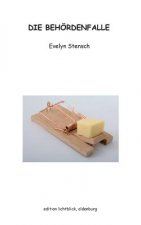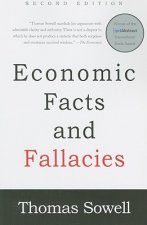
Kod: 02414040
Temperature control on hot pots in the aluminium production
Autor Karsten Sommer
Inhaltsangabe:Introduction: The process of aluminium production is, even nearly 150 years after its discovery, not totally understood. Such a large quantity of factors influences the production process that no standard can be app ... więcej
- Język:
 Angielski
Angielski - Oprawa: Miękka
- Liczba stron: 116
Wydawca: Diplom.de, 2003
- Więcej informacji o książce

91.57 €
Zwykle: 98.51 €
Oszczędzasz 6.94 €

Dostępna u dostawcy
Wysyłamy za 15 - 20 dni
Zobacz książki o podobnej tematyce
-

Woman-Hater
56.75 € -

Die Behoerdenfalle
9.45 €
Bon podarunkowy: Radość gwarantowana
- Podaruj bon o dowolnej wartości, a my się zajmiemy resztą.
- Bon podarunkowy dotyczy całej naszej oferty.
- Możesz wydrukować elektroniczny bon z e-maila a następnie przekazać go obdarowanemu.
- Ważność bonu wynosi 12 miesięcy od daty wystawienia.
Więcej informacji o Temperature control on hot pots in the aluminium production
Za ten zakup dostaniesz 230 punkty
 Opis
Opis
Inhaltsangabe:Introduction: The process of aluminium production is, even nearly 150 years after its discovery, not totally understood. Such a large quantity of factors influences the production process that no standard can be applied on it. In an aluminium reduction plant there are no two identical electrolysis cells. Differences in the start-up and operational disturbances alter the thermal and electrical behaviour of each cell individually. So every cell has to be monitored individually through the continuous changing bath composition and temperature variation. Every cell needs an individual dynamic optimisation of the chemical and thermal input, e.g. the AlF3- and CaF2-addition and the regulation of the anode-cathode distance. Self-regulating mechanism are the melting and freezing of the sidewall ledge, external mechanisms the lifting and lowering of the anodes. In this work a cell control system at Alumar (Brazil) was analysed and improved. The focus laid on controlling the cell temperature through a variation of the anode-cathode distance. The main objective was to analyse the effect and influence of a so-called temperature resistance modifier on hot pots (electrolysis cells). When the temperature of an electrolysis cell exceeds a certain limit, the pot operates outside its optimal working conditions, thus it has to be cooled down. This can happen by reducing the anode-cathode distance and therefore the resistance of the pot. The reduction is controlled by the so-called temperature resistance modifier. The concept of the temperature modifier was introduced less than one year ago at Alumar and is also within the Alcoa group a quite unexplored field. This work is structured in two parts, first an introduction to theory, then the practical part. Chapter 2 gives some general information, from the history of aluminium to a brief overview over the entire production process. Chapter 3 focuses on the general functioning of the aluminium electrolysis. Chapter 4 details the properties of the cryolite bath in the reduction cell and their impacts on the pot operating characteristics. Chapter 5 contains the experimental part of the work. In a first time the quality of the measurement system was tested. Then the relations between temperature resistance modifier and time as well as two bath parameters, the temperature and the ratio were inquired. Thereafter substantial modifications on the program that calculates the temperature modifier were analysed and tested: The program logic includes several restrictive conditions whose task it is to prevent that the temperature modifier action could harm the pot and destabilise the reduction process. All these conditions were analysed and tested one by one to check their sense and their effect. The objective was to augment the percentage of pots on which the temperature modifier can be applied, i.e. to cool more hot pots down. The formula that calculates the temperature modifier value was analysed and a new formula was tested. The objective was to adapt the temperature modifier better to the pots needs and turn its action more flexible. In chapter 6 the final conclusions are drawn including the benefits and disadvantages of all the realised tests. Chapter 7 gives suggestions for future researches and improvements. Inhaltsverzeichnis:Table of Contents: 1.Introduction5 2.Aluminium7 2.1A short history of aluminium7 2.2Application fields for aluminium8 2.3From the bauxite to the final product9 2.3.1Bauxite mining9 2.3.2The Bayer process10 2.3.3The primary aluminium electrolysis10 2.3.4Refining and casting10 2.3.5Process balance10 2.3.6Recycling11 3.The primary aluminium electrolysis12 3.1The bath12 3.2The electrolysis cell and the potroom12 3.3State of the technology14 3.3.1Process improvements in the last 30 years14 3.3.2Nowaday...
 Szczegóły książki
Szczegóły książki
Kategoria Books in English Economics, finance, business & management Economics
91.57 €
- Pełny tytuł: Temperature control on hot pots in the aluminium production
- Podtytuł: Analysis and Improvement
- Autor: Karsten Sommer
- Język:
 Angielski
Angielski - Oprawa: Miękka
- Liczba stron: 116
- EAN: 9783838671383
- ISBN: 3838671384
- ID: 02414040
- Wydawca: Diplom.de
- Waga: 159 g
- Wymiary: 210 × 148 × 7 mm
- Data wydania: 24. August 2003
Ulubione w innej kategorii
-

Principles for Dealing with the Changing World Order
24.34 € -

Freakonomics
7.94 € -20 % -

Team Topologies
23.94 € -10 % -

Pyramid Principle, The
51.21 € -

Art of Statistics
10.96 € -23 % -

Rational Optimist
13.68 € -

Freakonomics
6.03 € -28 % -

Why Nations Fail
11.76 € -29 % -

Misbehaving - The Making of Behavioral Economics
10.66 € -10 % -

How I Made One Million Dollars Last Year Trading Commodities
39.14 € -22 % -

Think Like a Freak
9.65 € -2 % -

Business Model Navigator, The
26.66 € -13 % -

Start-Up Nation
9.05 € -29 % -

Liar's Poker
13.68 € -

Irrational Exuberance
20.42 € -6 % -

New World Economy: A Beginner's Guide
14.78 € -22 % -

Economics Book
21.12 € -16 % -

Cult of We
11.26 € -28 % -

History of Economics
15.19 € -28 % -

Fed Up
25.55 € -17 % -

Microeconomics and Behaviour, 3e
70.84 € -1 % -

Essential Mathematics for Economic Analysis
73.15 € -

Economics In One Lesson
14.68 € -27 % -

A-Level Economics: Year 1 & 2 Complete Revision & Practice (with Online Edition)
26.46 € -14 % -

(Mis)Behaviour of Markets
13.27 € -28 % -

Predictably Irrational
14.98 € -29 % -

Price of Inequality
9.55 € -19 % -

The Invisible Hand
7.34 € -27 % -

Breakthrough Copywriter
17.10 € -

Scrum - A Pocket Guide - 3rd edition
22.73 € -3 % -

Debt, 10th Anniversary Edition
25.75 € -27 % -

Economic Facts and Fallacies
16.70 € -20 % -

Leading at a Higher Level
30.58 € -9 % -

ITIL4 A POCKET GUIDE
23.54 € -

Decision Book
13.48 € -28 % -

Cartoon Introduction to Economics
15.19 € -28 % -

Discovery, Capitalism & Distributive Justice
18.41 € -12 % -

Economics: The User's Guide
12.87 € -22 % -

Human Action
38.03 € -

Phishing for Phools
16.29 € -18 % -

Economics 101
13.27 € -28 % -

Misbehavior of Markets
22.33 € -

Econometric Analysis, Global Edition
86.54 € -

Hypomanic Edge
20.02 € -16 % -

Rise of Carry: The Dangerous Consequences of Volatility Suppression and the New Financial Order of Decaying Growth and Recurring Crisis
24.14 € -26 % -

Myth of Capitalism - Monopolies and the Death of Competition
18.51 € -35 % -

ISE Investments
76.27 € -4 % -

How Rich Countries Got Rich and Why Poor Countries Stay Poor
15.19 € -28 % -

Principles of Economics
15.59 € -13 %
Collection points Bratislava a 2642 dalších
Copyright ©2008-24 najlacnejsie-knihy.sk All rights reservedPrivacyCookies


 15549 collection points
15549 collection points Delivery 2.99 €
Delivery 2.99 € 02/210 210 99 (8-15.30h)
02/210 210 99 (8-15.30h)